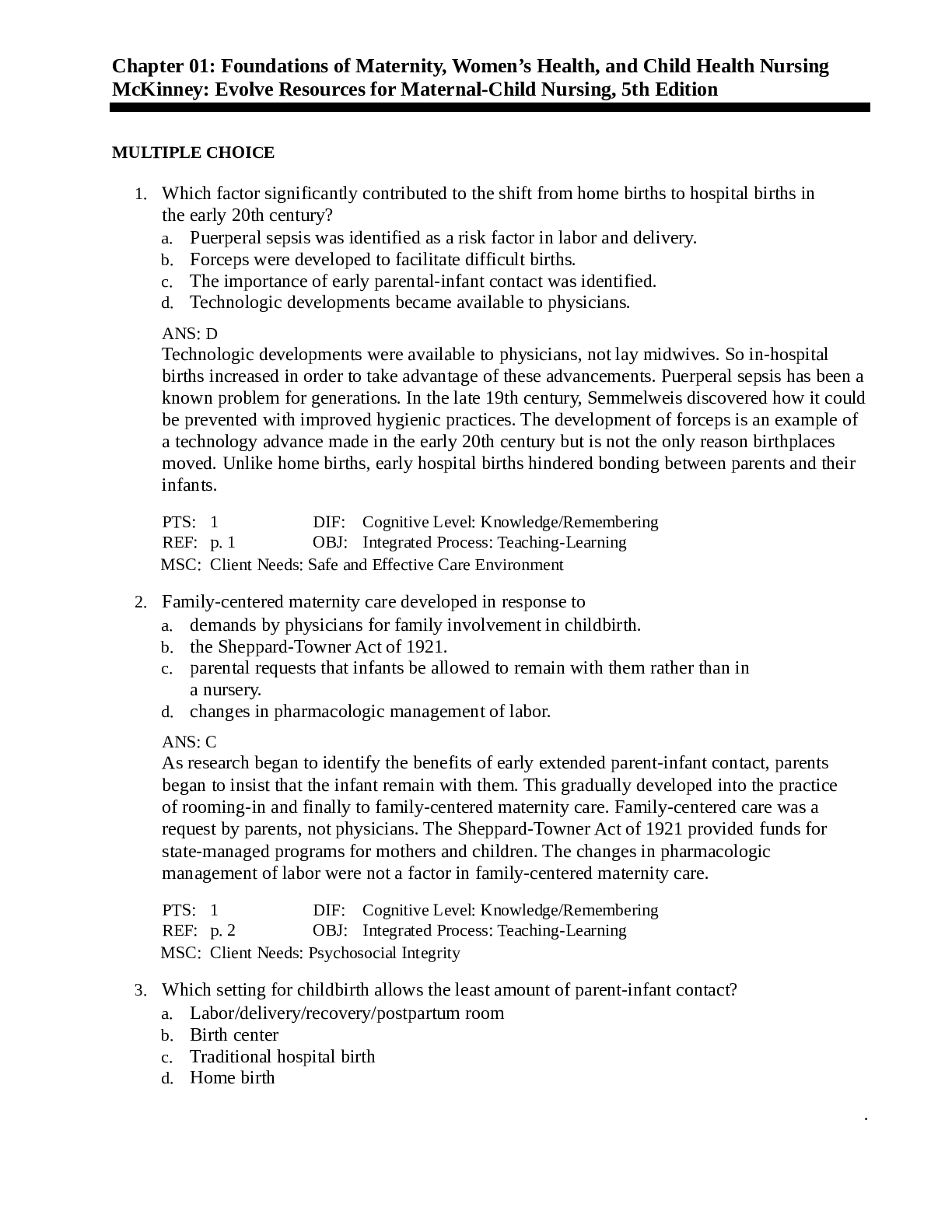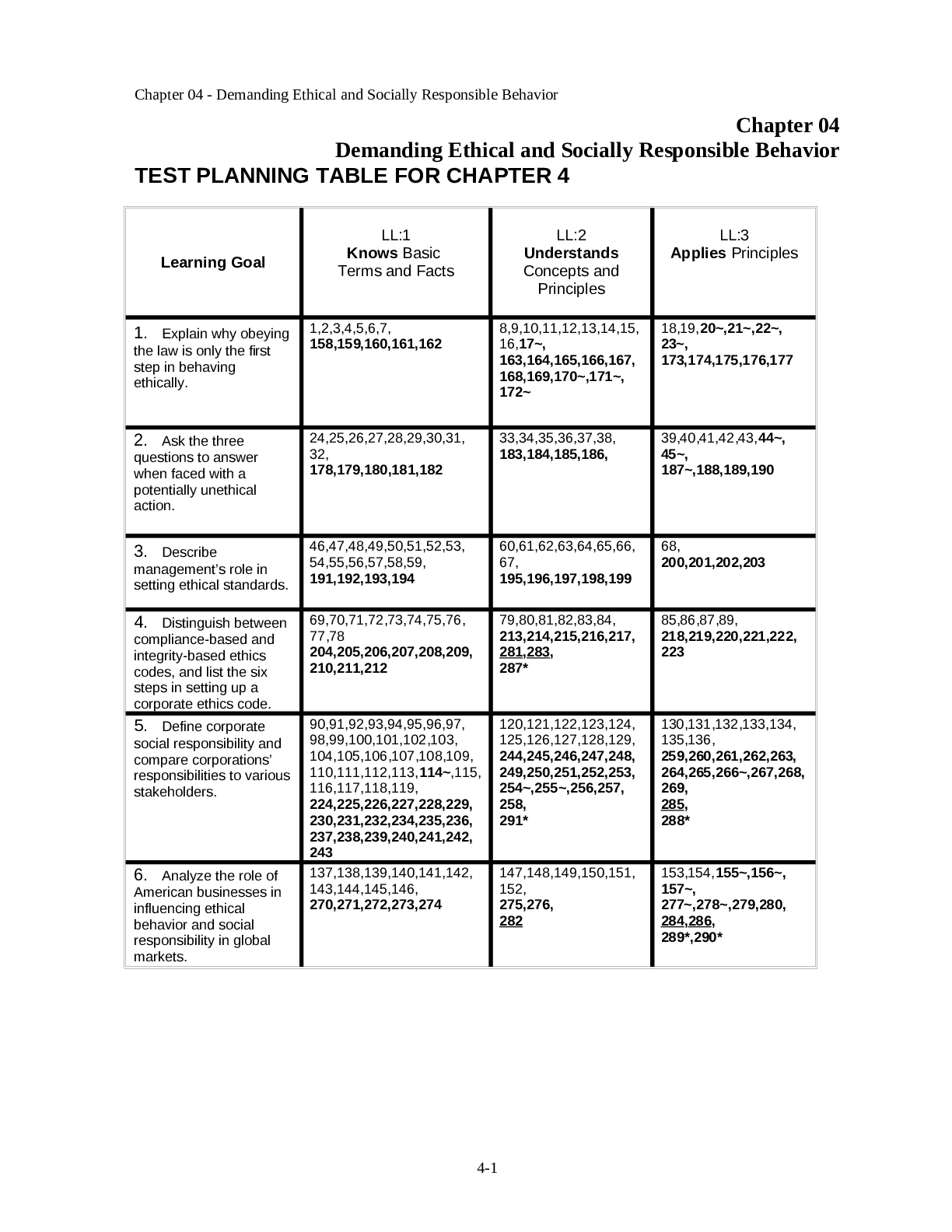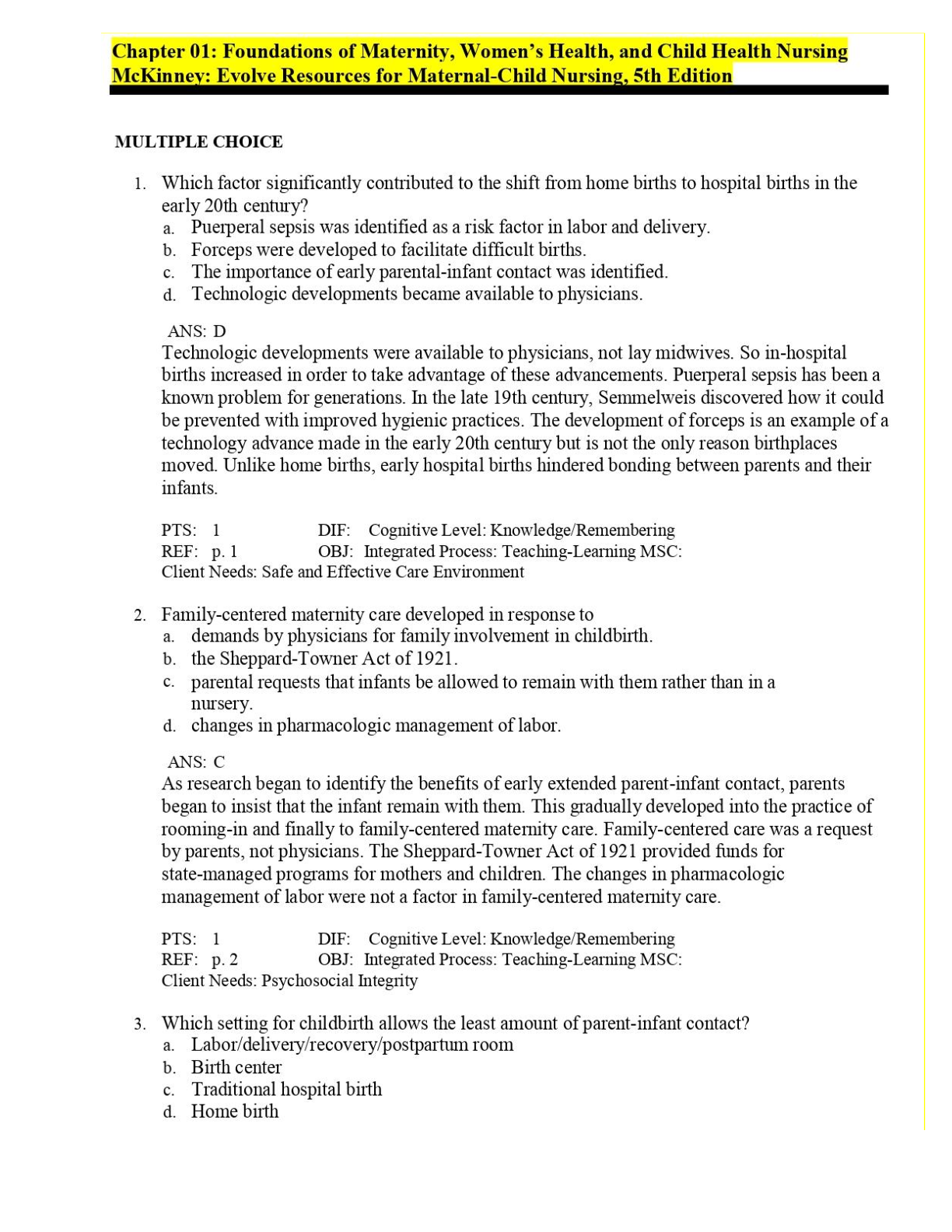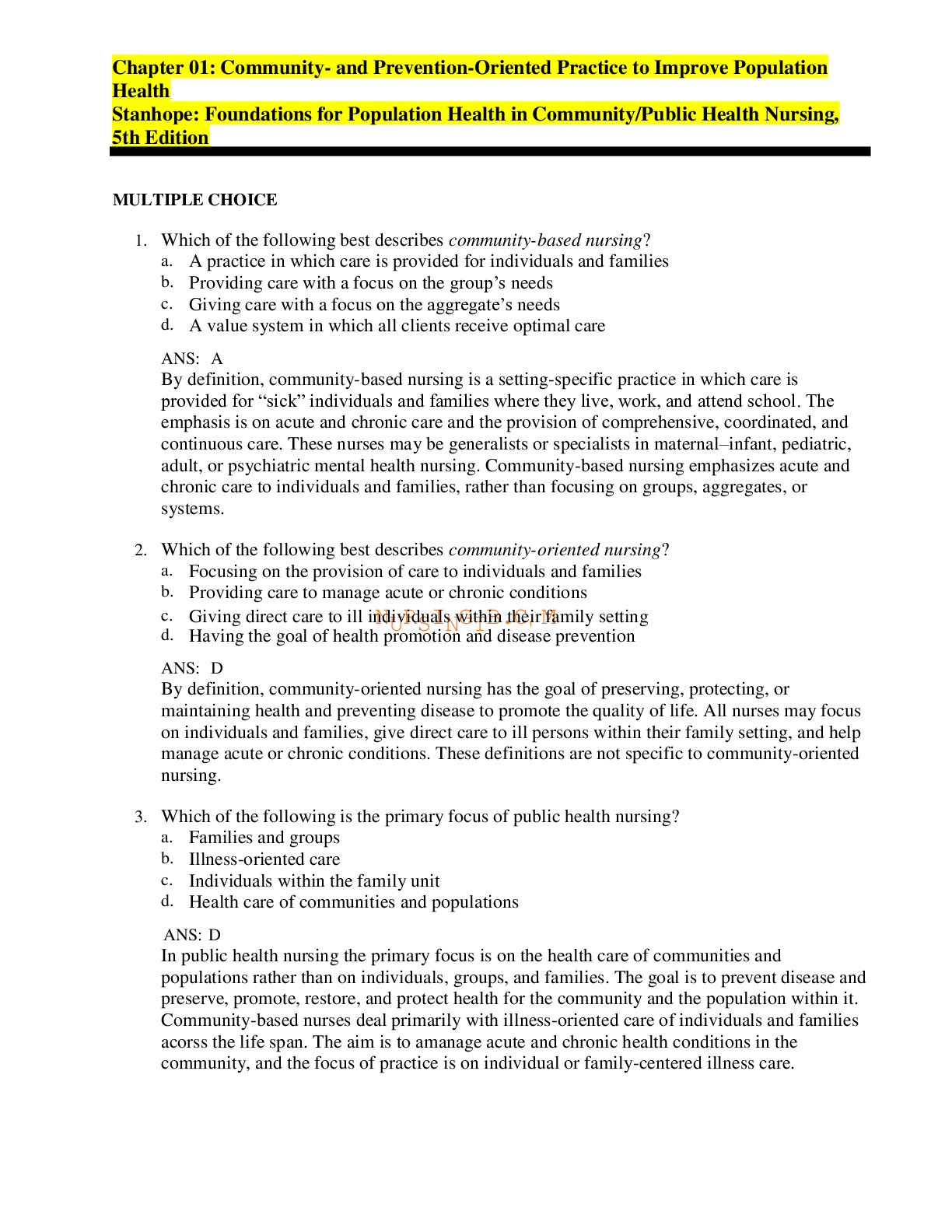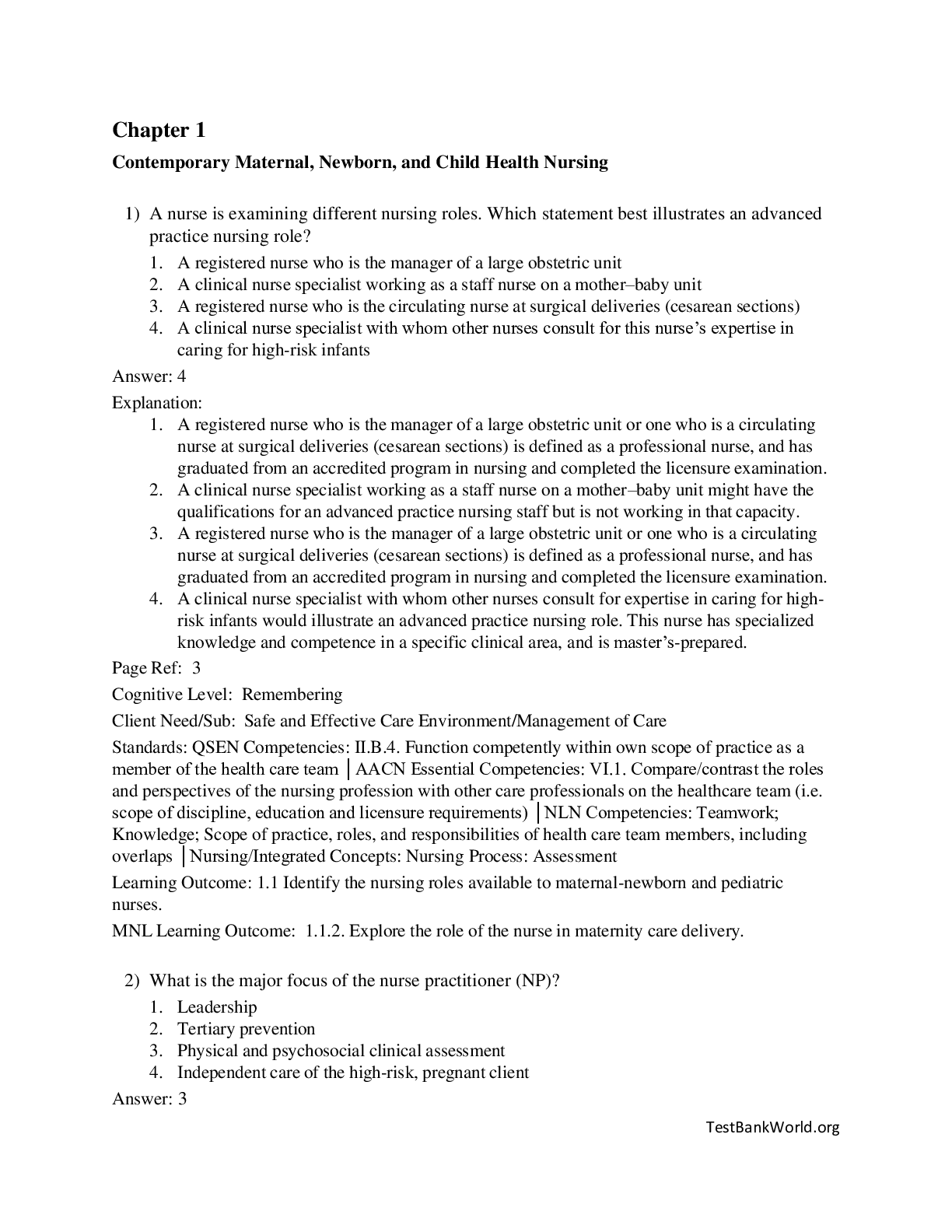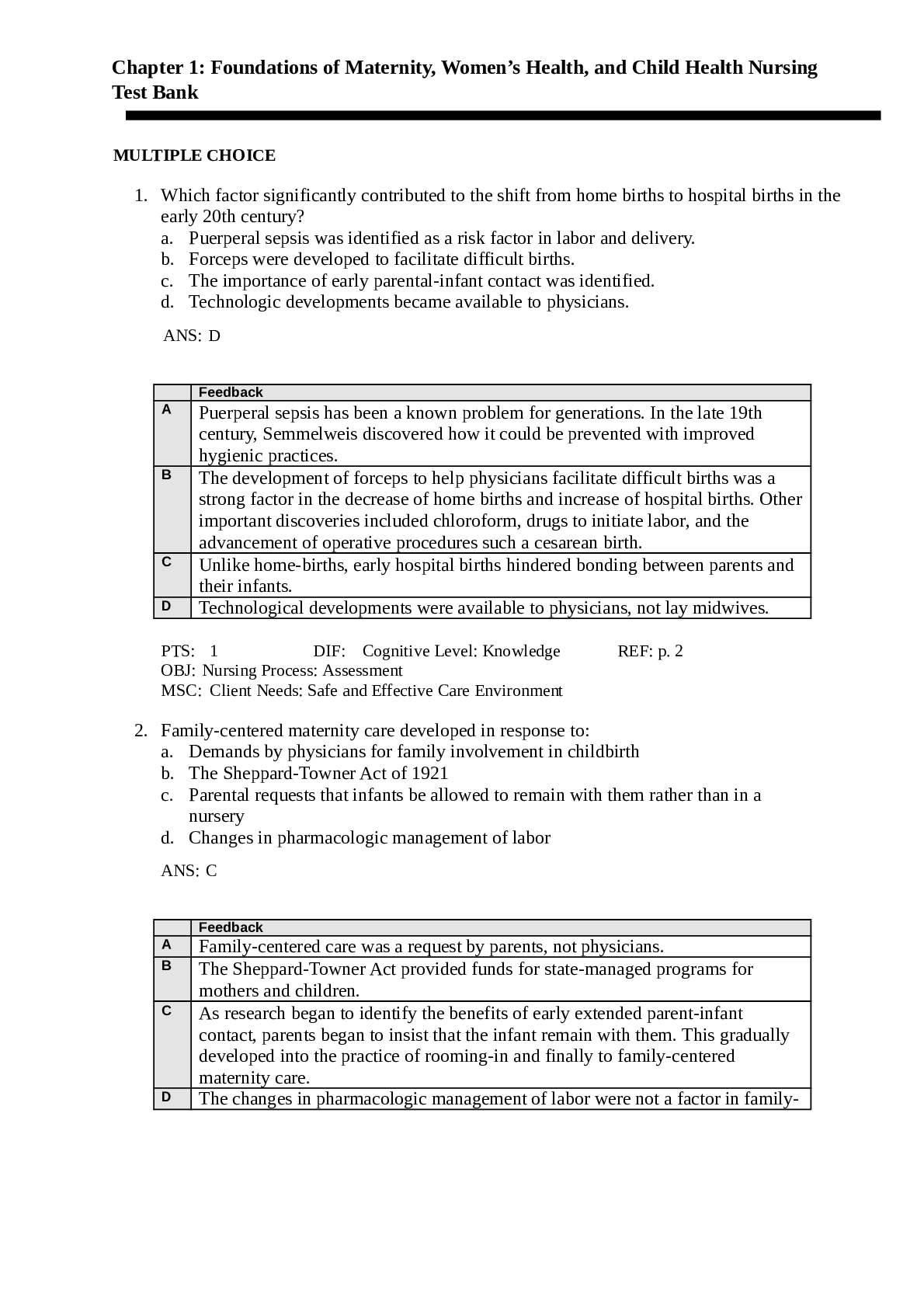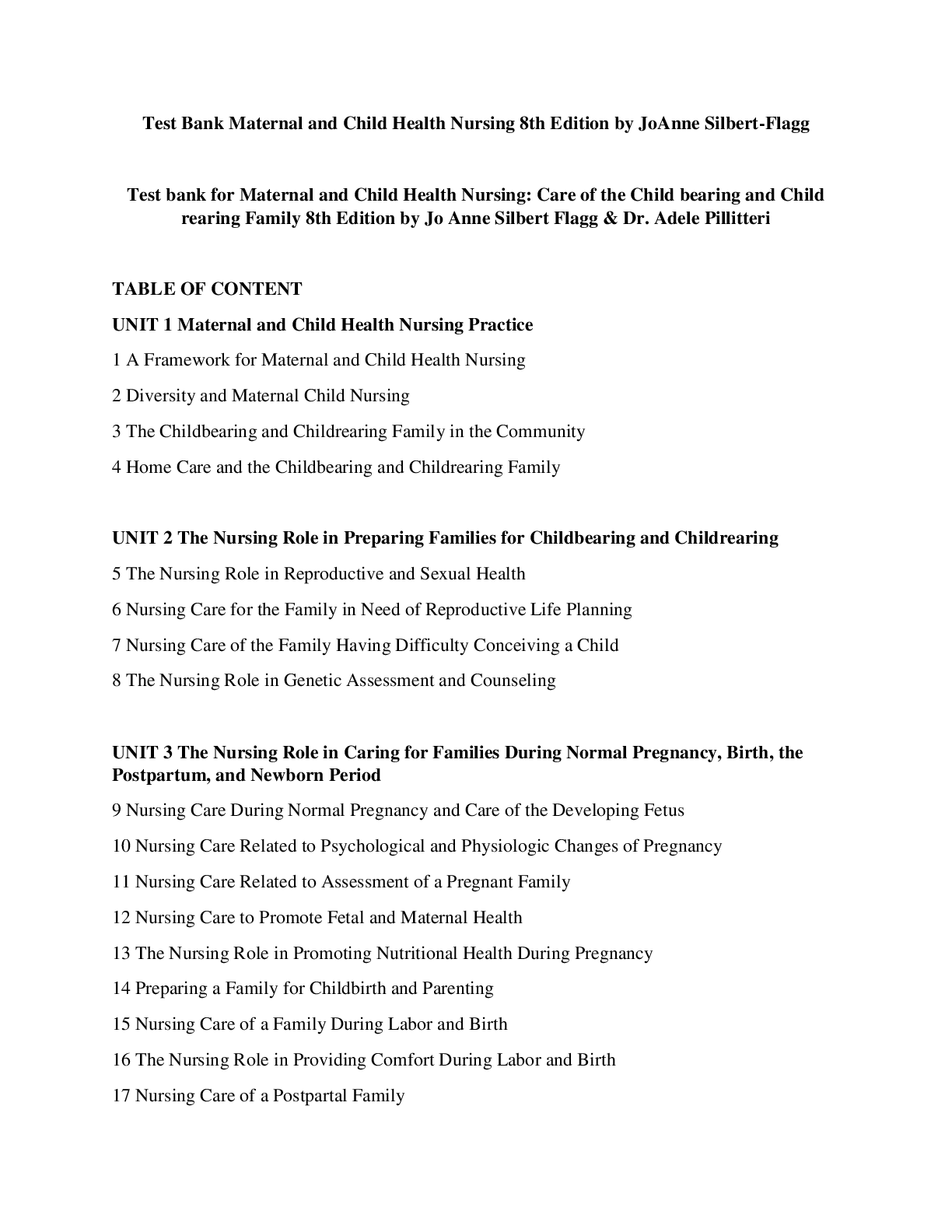*NURSING > TEST BANKS > Psychiatric Mental Health Nursing Test Bank Rated A+ (All)
Psychiatric Mental Health Nursing Test Bank Rated A+
Document Content and Description Below
1. The nurse is assessing the factors contributing to the well-being of a newly admitted client. Which of the following would the nurse identify as having a positive impact on the individual's menta... l health? A) Not needing others for companionship B) The ability to effectively manage stress C) A family history of mental illness D) Striving for total self-reliance 2. Which of the following is true regarding mental health and mental illness? A) Behavior that may be viewed as acceptable in one culture is always unacceptable in other cultures. B) It is easy to determine if a person is mentally healthy or mentally ill. C) In most cases, mental health is a state of emotional, psychological, and social wellness evidenced by satisfying interpersonal relationships, effective behavior and coping, positive self-concept, and emotional stability. D) Persons who engage in fantasies are mentally ill. 3. A client grieving the recent loss of her husband asks if she is becoming mentally ill because she is so sad. The nurse's best response would be... A) “You may have a temporary mental illness because you are experiencing so much pain.” B) “You are not mentally ill. This is an expected reaction to the loss you have experienced.” C) “Were you generally dissatisfied with your relationship before your husband's death?” D) “Try not to worry about that right now. You never know what the future brings.” 4. The nurse consults the DSM for which of the following purposes? A) To devise a plan of care for a newly admitted client B) To predict the client's prognosis of treatment outcomes C) To document the appropriate diagnostic code in the client's medical record D) To serve as a guide for client assessment 5. Which of the following would be a reason for a student nurse to use the DSM-5? A) Identifying the medical diagnosis B) Choose clients' treatment C) Evaluate treatments D) Understand the reason for the admission and the nature of psychiatric illnesses. 6. Legislation enacted in 1963 was largely responsible for which of the following shifts in care for the mentally ill? A) The widespread use of community-based services B) The advancement in pharmacotherapies C) Increased access to hospitalization D) Improved rights for clients in long-term institutional care 7. Which one of the following is a result of federal legislation? A) Making it easier to commit people for mental health treatment against their will. B) Making it more difficult to commit people for mental health treatment against their will. C) State mental institutions being the primary source of care for mentally ill persons. D) Improved care for mentally ill persons. 8. The goal of the 1963 Community Mental Health Centers Act was to... A) ensure clients' rights for the mentally ill B) deinstitutionalize state hospitals C) provide funds to build hospitals with psychiatric units D) treat people with mental illness in a humane fashion 9. The creation of asylums during the 1800s was meant to... A) improve treatment of mental disorders B) provide food and shelter for the mentally ill C) punish people with mental illness who were believed to be possessed D) remove dangerous people with mental illness from the community 10. Which of the following is a major problem with large state institutions? Select all that apply. A) Attendants were accused of abusing the residents B) Stigma associated with residence in an insane asylum C) Clients were geographically isolated from family and community D) Increasing financial costs to individual residents E) Clients were not given proper nutrition or clothed properly 11. A significant change in the treatment of people with mental illness occurred in the 1950s when... A) community support services were established. B) legislation dramatically changed civil commitment procedures. C) the Patient's Bill of Rights was enacted. D) psychotropic drugs became available for use. 12. Before the period of the enlightenment, treatment of the mentally ill included... A) creating large institutions to provide custodial care. B) focusing on religious education to improve their souls. C) placing the mentally ill on display for the public's amusement. D) providing a safe refuge or haven offering protection. 13. The first training of nurses to work with persons with mental illness was in 1882 in which state? A) California B) Illinois C) Massachusetts D) New York 14. What is meant by the term "revolving door effect" in mental health care? A) An overall reduction in incidence of severe mental illness B) Shorter and more frequent hospital stays for persons with severe and persistent mental illness C) Flexible treatment settings for mentally ill D) Most effective and least expensive treatment settings 15. Which of the following statements by the nurse to the client's family is true of treatment of people with mental illness in the United States today? A) Substance abuse is effectively treated with brief hospitalization. B) Financial resources are reallocated from state hospitals to community programs and support. C) Only one in four people needing mental health services are receiving those services. D) Emergency department visits by persons who are acutely disturbed are declining. 16. The case manager is providing an educational seminar for the nursing staff, she includes objectives from Healthy People 2020. Which of the following is the priority of the objectives for mental health? A) Improved inpatient care B) Primary prevention of emotional problems C) Stress reduction and management D) Treatment of mental illness 17. Which is a positive aspect of treating clients with mental illness in a community-based care? A) “You will not be allowed to go out with your friends while in the program.” B) “You will have to have supervision when you want to go anywhere else in the community.” C) “You will be able to live in your own home while you still see a therapist regularly.” D) “You will have someone in your home at all times to ask questions if you have any concerns.” 18. One of the unforeseen effects of the movement toward community mental health services is... A) fewer clients suffering from persistent mental illnesses. B) an increased number of hospital beds available for clients seeking treatment. C) an increased number of admissions to available hospital services. D) Longer hospital stays for people needing mental health services. 19. Which is included in Healthy People 2020 objectives? A) To decrease the incidence of mental illness B) To increase the number of people who are identified, diagnosed, treated, and helped to live healthier lives C) To provide mental health services only in the community D) To decrease the numbers of people who are being treated for mental illness 20. A client diagnosed with a mild anxiety disorder has been referred to treatment in a community mental health center. Treatment most likely provided at the center includes... A) medical management of symptoms. B) daily psychotherapy. C) constant staff supervision. D) psychological stabilization. 21. There are many areas of practice in psychiatric mental health nursing. One of those is advanced-level practice. Which of the following is considered an advanced-level function? A) Case management B) Counseling C) Evaluation D) Health teaching 22. Nursing education has become broad in practice settings. The addition of Psychiatric nursing became a requirement in nursing education in 1950 by whom? A) State Boards of Nursing B) American Nurses Association C) National League of Nursing D) Nurse Practice Act 23. A new graduate nurse has accepted a staff position at an inpatient mental health facility. The graduate nurse can expect to be responsible for basic-level functions, including... A) providing clinical supervision. B) using effective communication skills. C) adjusting client medications. D) directing program development. 24. Which of the following is one of the American Nurses Association standards of practice for psychiatric–mental health nursing? A) Prescriptive authority is granted to psychiatric–mental health registered nurses. B) All aspects of Standard 5: Implementation may be carried out by psychiatric–mental health registered nurses. C) Some aspects of Standard 5: Implementation may only be carried out by psychiatric–mental health advanced practice nurses. D) Psychiatric–mental health advanced practice nurses are the only ones who may provide milieu therapy. [Show More]
Last updated: 2 years ago
Preview 1 out of 265 pages
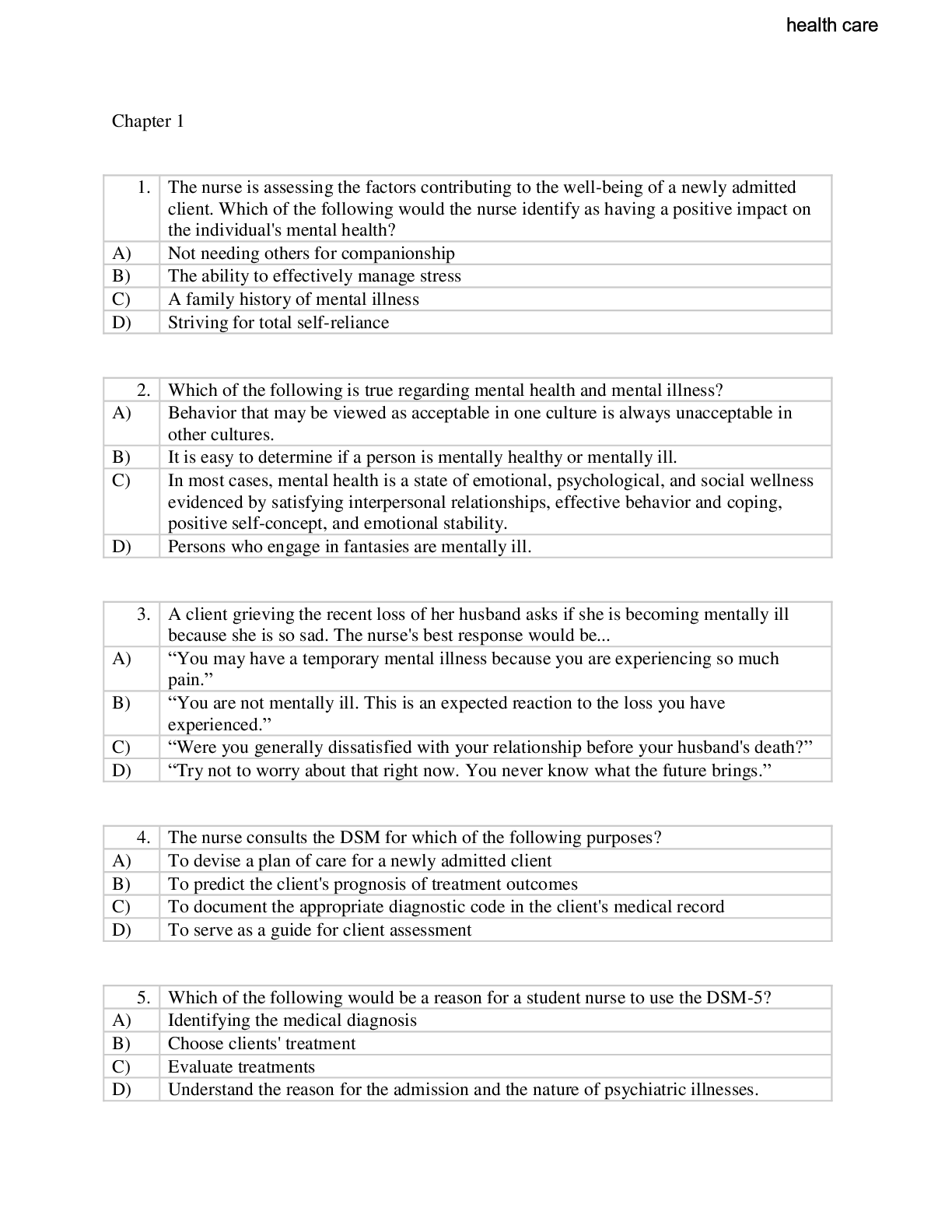
Buy this document to get the full access instantly
Instant Download Access after purchase
Buy NowInstant download
We Accept:

Reviews( 0 )
$17.00
Can't find what you want? Try our AI powered Search
Document information
Connected school, study & course
About the document
Uploaded On
Sep 01, 2021
Number of pages
265
Written in
Additional information
This document has been written for:
Uploaded
Sep 01, 2021
Downloads
0
Views
109



.png)


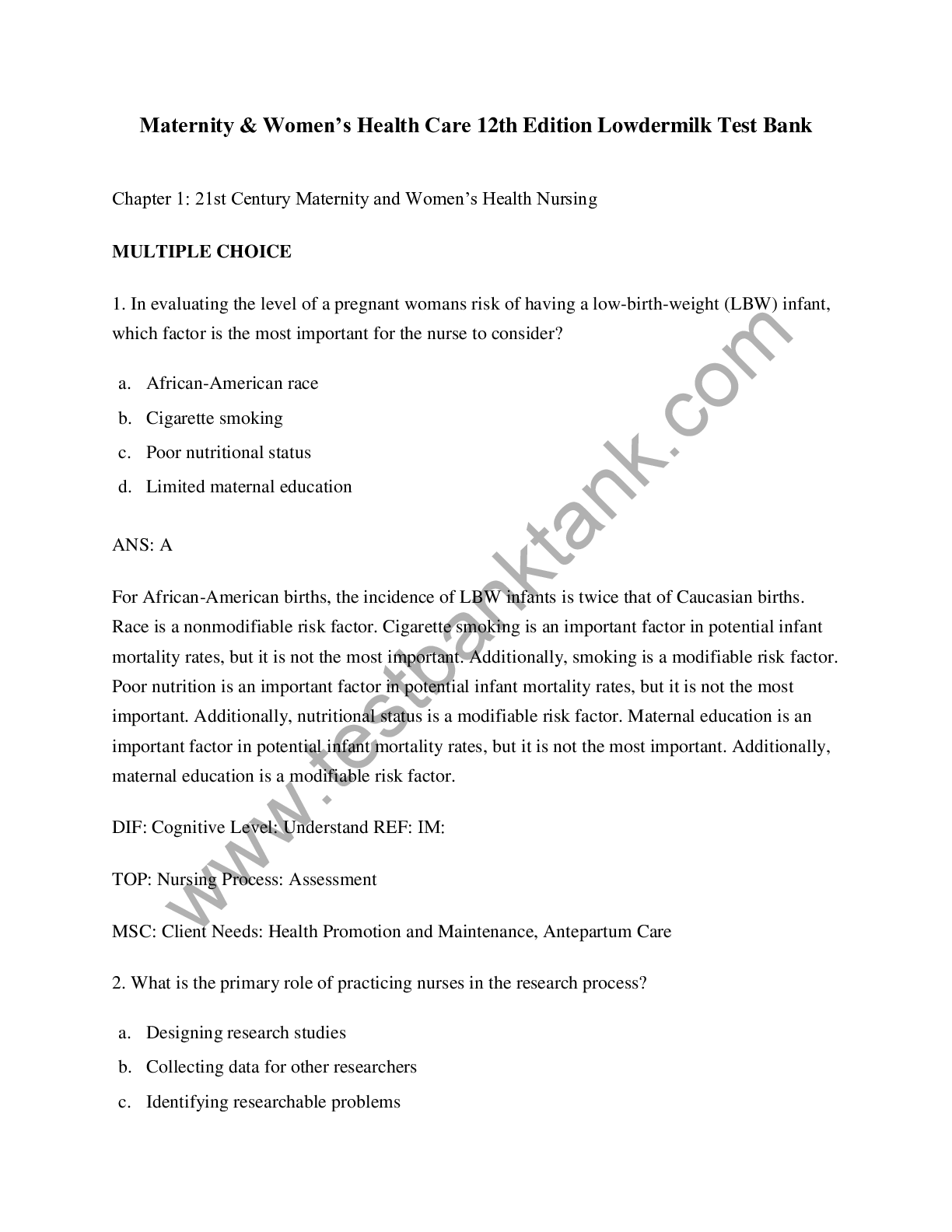
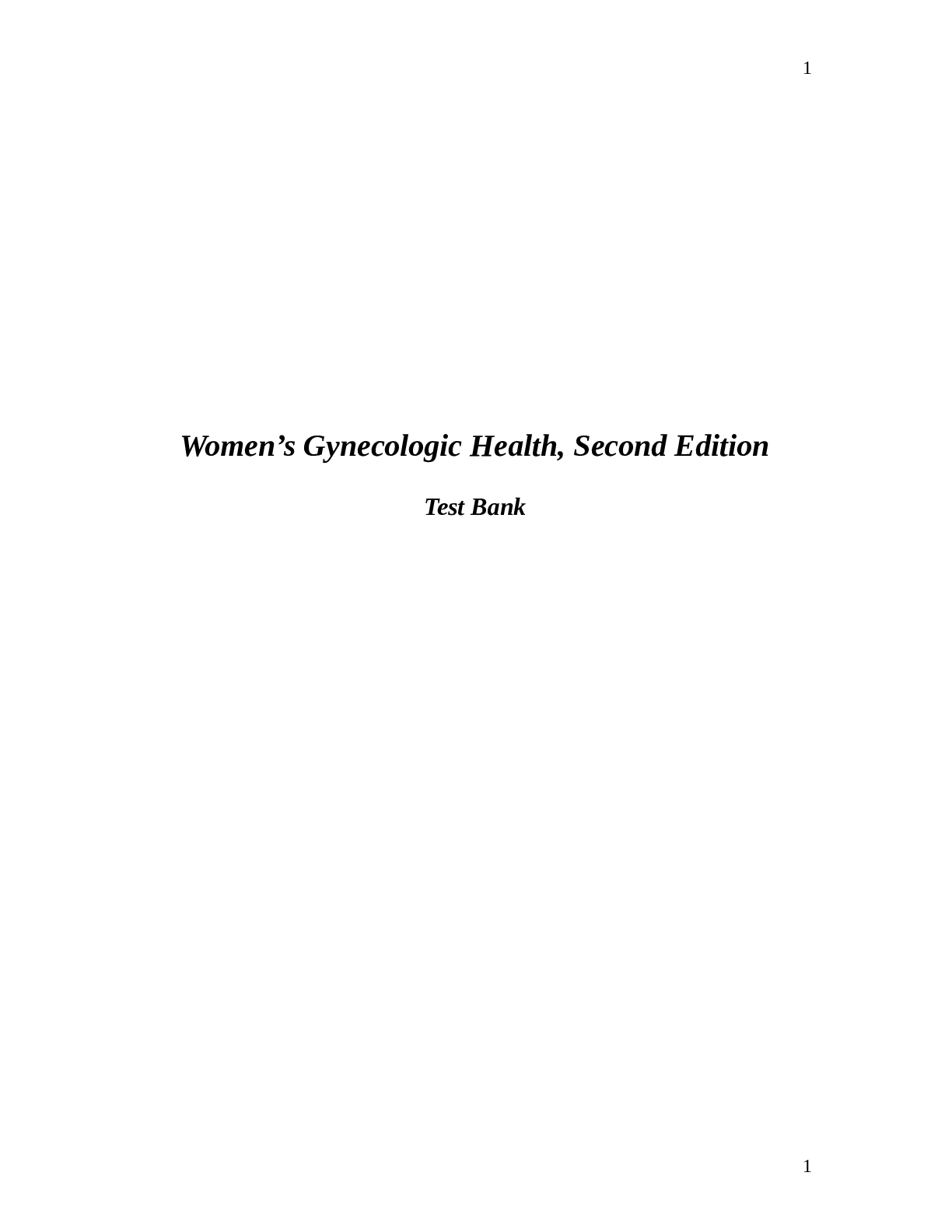


.png)
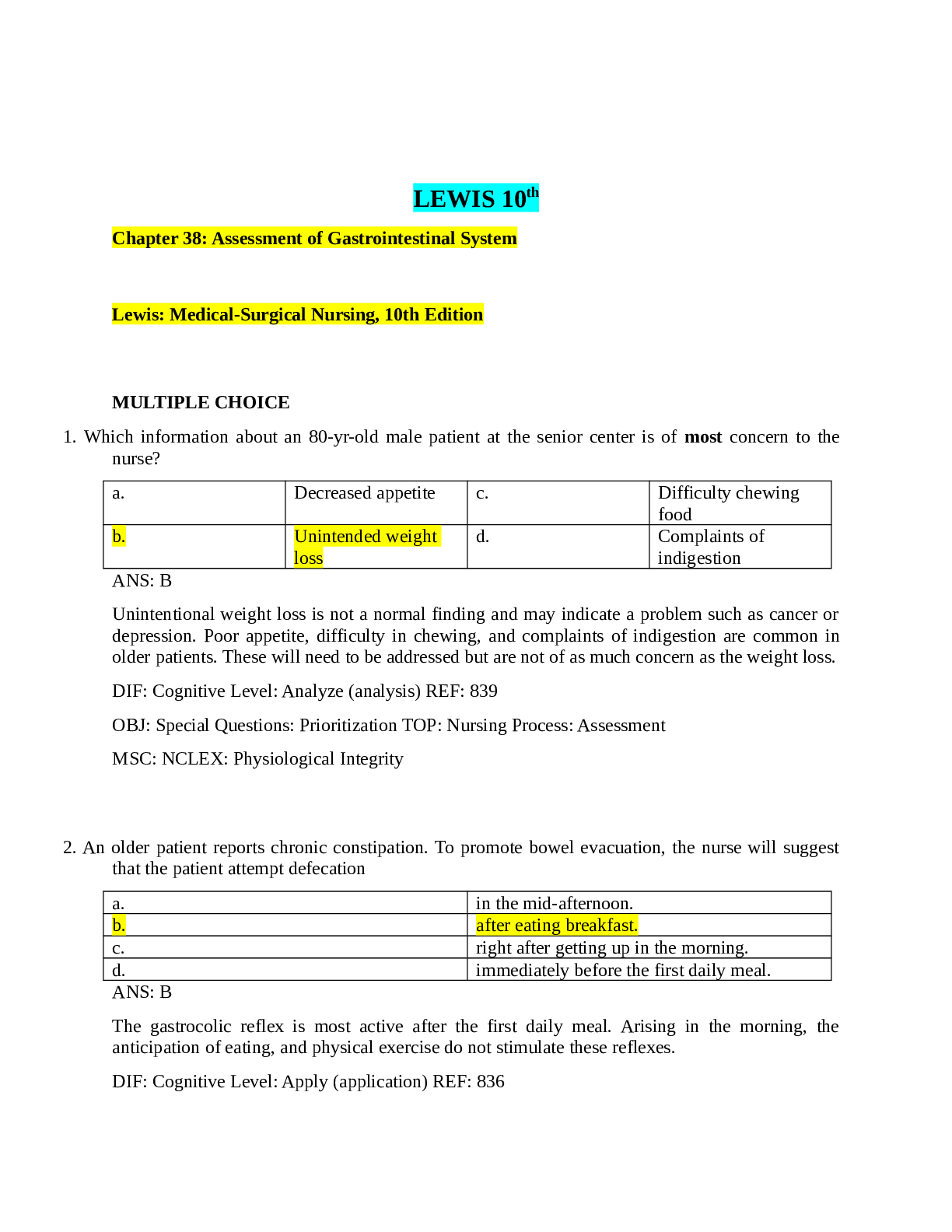
.png)
